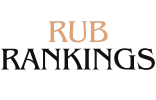In the digital world, managing and displaying data in an organized manner is crucial. Whether it’s for a personal website, a business project, or an online portfolio, tables are essential tools to display data clearly and effectively. One powerful platform that allows users to create and manage such data displays is TiddlyWiki. TiddlyWiki is a non-linear personal web notebook that can be used for a variety of purposes. One of its unique features is the ability to create tables using its powerful markdown-like syntax.
This article will provide a step-by-step guide on how to create a table using TiddlyHost, a service that hosts your TiddlyWiki online, making it accessible from anywhere. By the end, you will know how to harness TiddlyWiki’s flexibility for data management and presentation.
What Is TiddlyWiki?
Before diving into the specifics of creating a table, it’s important to understand the core of the tool you’re working with. TiddlyWiki is an open-source, single-file wiki that can be used for personal note-taking, knowledge management, or as a web-based journal. It allows users to create a highly customizable and interactive platform for storing and organizing information.
Features of TiddlyWiki:
- Non-linear structure: Information can be connected in an intuitive way without a predefined hierarchy.
- Customizable: The platform can be styled and extended to fit individual needs.
- Portable: TiddlyWiki is a single HTML file, which makes it easy to transport or store.
- Extensible: Using plugins, TiddlyWiki can be expanded to perform a variety of tasks, including creating tables.
TiddlyHost is a hosting service for TiddlyWiki users. It makes it easy to access and share your TiddlyWiki without the hassle of setting up your own server.
TiddlyWiki and Tables
Although TiddlyWiki is primarily designed for note-taking and knowledge management, its ability to manage structured data is particularly useful for users who need to create tables within their wiki. These tables can be used for various purposes, including task management, project tracking, data logging, and more.
Why Use Tables in TiddlyWiki?
Tables help organize data in a visually accessible format. They are particularly useful for:
- Displaying numerical data: Such as sales figures, financial data, or performance metrics.
- Creating comparison charts: To compare products, features, or ideas.
- Structuring project details: Including tasks, deadlines, and responsibilities.
By using TiddlyWiki’s syntax and features, you can easily create complex tables that suit your specific needs.
How to Create a Table in TiddlyWiki
Creating a table in TiddlyWiki involves using its simple markup syntax to define the rows and columns. The process is straightforward, even for beginners.
Step 1: Access Your TiddlyWiki on TiddlyHost
If you’re using TiddlyHost to host your TiddlyWiki, start by logging into your account and opening your wiki. If you don’t have an account, you can easily sign up for free on the TiddlyHost website.
Once you’re logged in:
- Open the TiddlyWiki that you wish to edit or create a new one.
- Navigate to the place where you want to add the table.
Step 2: Basic Syntax for Creating a Table
TiddlyWiki uses a markdown-like syntax to create tables. Here’s how to create a basic table:
Basic Table Syntax:
| Header 1 | Header 2 | Header 3 |
|----------|----------|----------|
| Row 1, Column 1 | Row 1, Column 2 | Row 1, Column 3 |
| Row 2, Column 1 | Row 2, Column 2 | Row 2, Column 3 |
Explanation:
- The first row defines the headers of the table.
- The second row contains the separator
|----------|----------|----------|, which is used to separate the header from the content. - Subsequent rows define the data entries.
Step 3: Adding More Rows and Columns
You can add as many rows and columns as you need by continuing the syntax. Each row is separated by a newline, and each cell in a row is separated by a pipe symbol (|).
For example, if you want to add another row:
| Header 1 | Header 2 | Header 3 |
|----------|----------|----------|
| Row 1, Column 1 | Row 1, Column 2 | Row 1, Column 3 |
| Row 2, Column 1 | Row 2, Column 2 | Row 2, Column 3 |
| Row 3, Column 1 | Row 3, Column 2 | Row 3, Column 3 |
Resulting Table:
| Header 1 | Header 2 | Header 3 |
|---|---|---|
| Row 1, Column 1 | Row 1, Column 2 | Row 1, Column 3 |
| Row 2, Column 1 | Row 2, Column 2 | Row 2, Column 3 |
| Row 3, Column 1 | Row 3, Column 2 | Row 3, Column 3 |
Step 4: Adding Styling to the Table
While TiddlyWiki’s basic table syntax does not support advanced styling out of the box, you can customize your table’s appearance by using CSS (Cascading Style Sheets). If you want your table to stand out visually, you can define custom styles for the table and its components.
Example CSS:
table {
border-collapse: collapse;
width: 100%;
}
th, td {
border: 1px solid #ddd;
padding: 8px;
text-align: left;
}
th {
background-color: #f2f2f2;
}
You can add this CSS in the “Tiddlers” section under StyleSheet in your TiddlyWiki. This will give your table a clean, modern appearance, with alternating colors for the header row and borders between cells.
Step 5: More Complex Tables
If you need more complex table structures, such as tables with merged cells or advanced formatting, TiddlyWiki allows you to use HTML syntax within its interface.
For example:
<table>
<tr>
<th>Header 1</th>
<th>Header 2</th>
<th>Header 3</th>
</tr>
<tr>
<td>Row 1, Column 1</td>
<td>Row 1, Column 2</td>
<td>Row 1, Column 3</td>
</tr>
<tr>
<td>Row 2, Column 1</td>
<td colspan="2">Row 2, Columns 2 and 3</td>
</tr>
</table>
This example creates a table where the second row’s second and third columns are merged into one cell.
Step 6: Editing and Managing Tables
Editing tables in TiddlyWiki is simple. Since it’s a wiki, any changes you make are saved automatically when you leave the Tiddler (the note) that contains the table. You can also easily delete or update rows and columns using the TiddlyWiki editor.
Tips for Managing Tables:
- Sorting: For large datasets, sorting tables manually might not be practical. Consider using plugins like TiddlyTables to add sorting functionality to your tables.
- Pagination: If you have too much data to fit in a single table, break the data up into multiple tables or pages within TiddlyWiki.
Conclusion
Creating tables in TiddlyWiki is a straightforward process, and using TiddlyHost for hosting your wiki allows you to share and access your data from anywhere. With the flexibility of TiddlyWiki’s markdown syntax and the option for advanced customization with HTML and CSS, you can create dynamic, structured tables tailored to your needs.
Whether you’re managing projects, tracking performance, or displaying key information, TiddlyWiki’s table functionality can be a valuable tool. By following the simple steps outlined in this guide, you’ll be able to integrate tables into your wiki seamlessly and present your data in a user-friendly format.
TiddlyHost provides a convenient platform for TiddlyWiki users to access and manage their content. With the added benefit of table creation, TiddlyWiki becomes even more powerful, allowing users to maintain their data in an organized, visually appealing manner.


